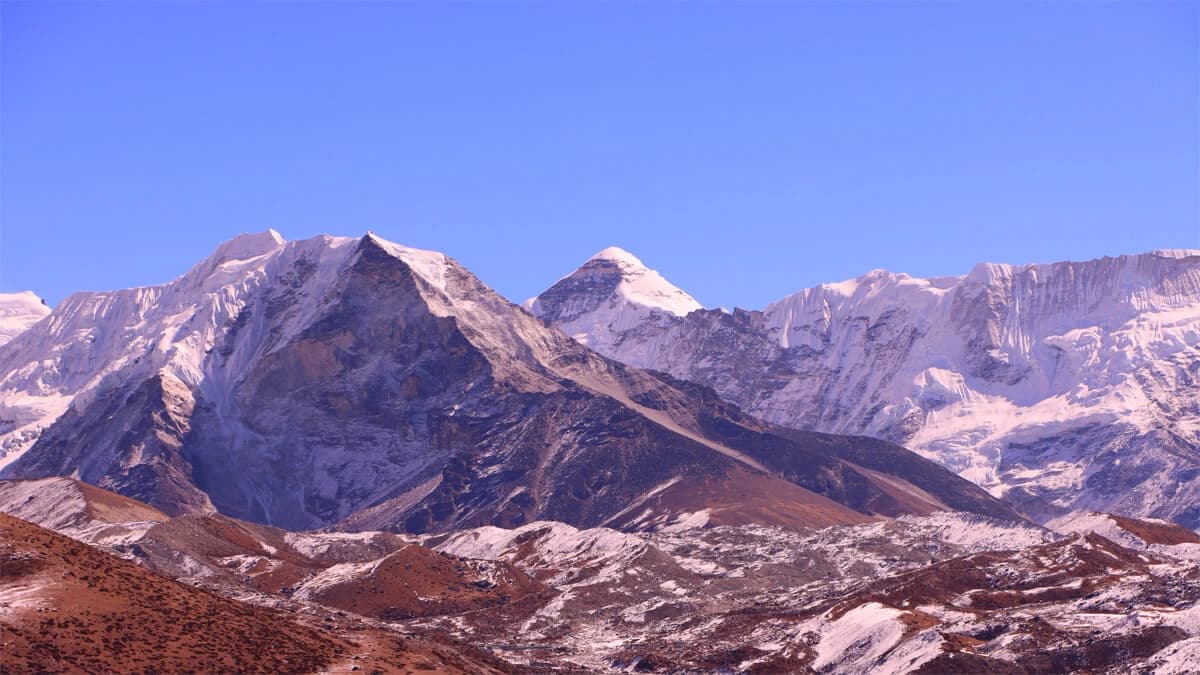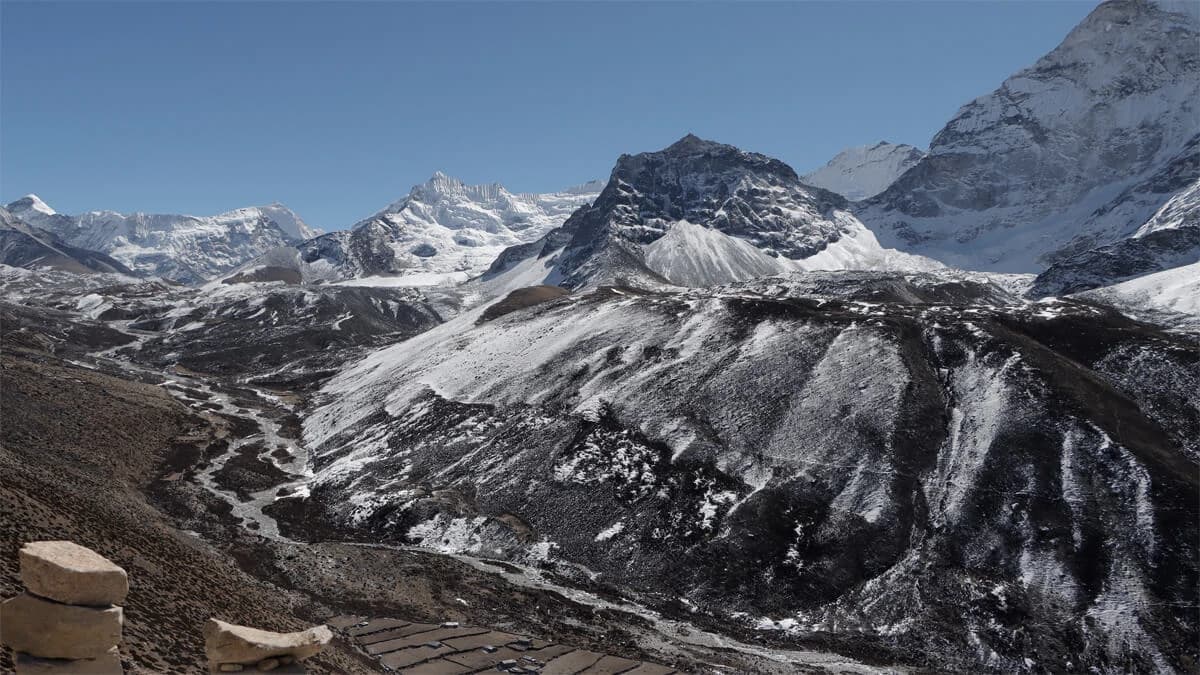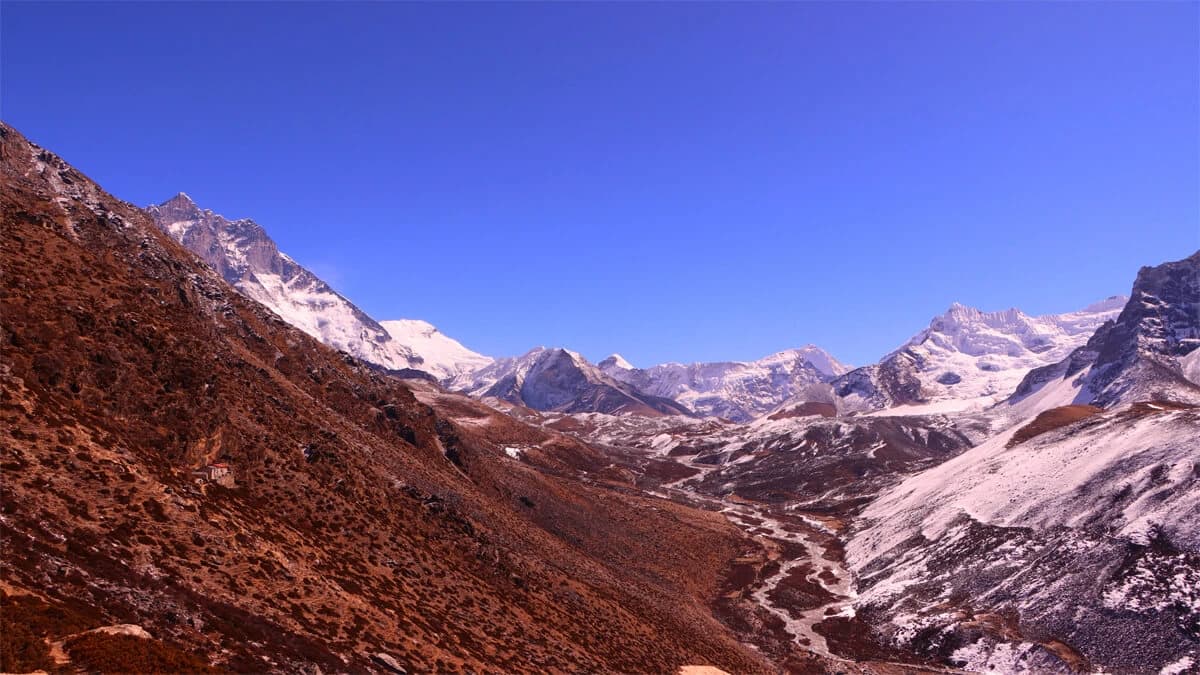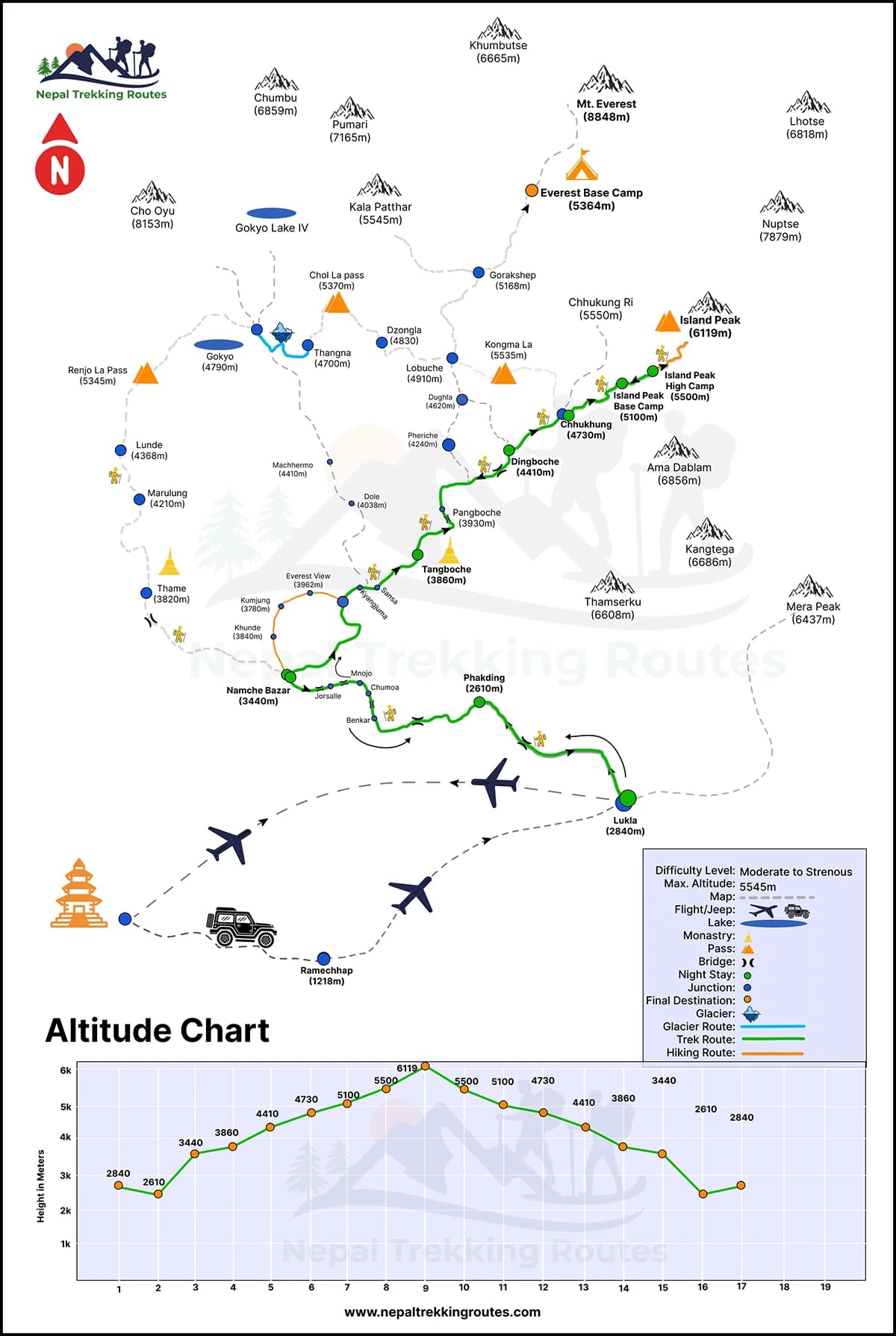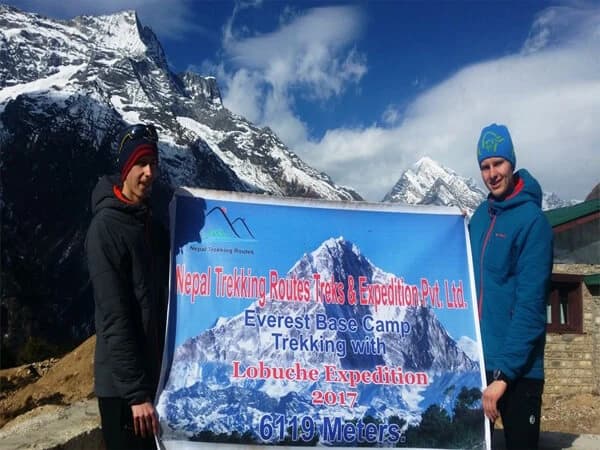Island Peak Climbing is one of the most popular adventure packages in Nepal located in the Khumbu region. Island Peak rises beautifully above the Imja Lakes which looks like an island floating among clouds. This journey offers the perfect mix of scenic trekking and exciting peak climbing in the Everest Region. This classic adventure is ideal for first-time climbers and also ideal for experienced climbers looking for a refresher. Island Peak is one of the most climbed trekking peaks in the Everest region standing at 6,189 meters. Every year, thousands of adventure lovers choose Island Peak to experience high Himalayan trekking, basic mountaineering, and unforgettable mountain views.
The Nepal trekking trip rewards you with an aerial view of the snow-capped peaks, alluring landscapes, and high-placed Sherpa villages. You can do Island Peak climbing without Everest Base Camp trek as well. The itinerary depends on whether you add the base camp to the package or not. While walking through the dense rhododendron, pine, and oak forests of Sagarmatha National Park, you come to witness many flora and fauna.
Located inside Sagarmatha National Park, a journey to Island Peak lets you enjoy the Great Himalayas. Mt. Amadablam (6,812 m), Cho-Oyu (8,201 m), Everest (8,848.86 m), Lhotse (8,516 m), Nuptse, Pumori, Thamsherku and several mountains are seen en route. Imja Valley, which is surrounded by gorges and glacial lakes, boasts juniper, fir, birch, and rhododendron forests. You encounter the Himalayan Thar, musk deer, goral, danphe,rare, jackal, monkey, and even the elusive snow leopard.
With enough acclimatization time, Imja Tse climbing can be done without any mishaps. During the rest day at Namche Bazaar, you have a few interesting things to do to adjust to the high altitude. It helps you avoid Acute Mountain Sickness (AMS) and explore the surrounding areas, too. You can visit the Everest View trek of Everest View Hotel, the hotel situated at the highest altitude in the world.
Major Highlights of Island Peak Climbing in Nepal
Island Peak climbing offers stunning views of Mount Everest, Lhotse, Nuptse, and Ama Dablam from the summit. The journey follows the classic Everest region trail through Sherpa villages like Namche Bazaar and Dingboche. Cimbers get a chance to experience local culture, monasteries, and mountain life.
Another major highlight is the exciting climbing experience itself. You will cross glaciers, use fixed ropes, and climb a short ice wall near the summit. Island Peak is challenging which is a perfect choice for trekkers who want their first Himalayan climbing adventure.
-
Stunning summit views of Everest, Lhotse, Nuptse, Ama Dablam, and surrounding Himalayan peaks
-
A perfect first Himalayan climbing experience for trekkers entering mountaineering
-
Scenic trekking route through the Everest region and the beautiful Imja Valley
-
Cultural experience in Sherpa villages like Namche Bazaar, Tengboche, and Dingboche
-
Exciting glacier walk, fixed ropes, and ice climbing near the summit
-
Achievable challenge at 6,189 meters with proper acclimatization
-
Strong sense of achievement and adventure after reaching the summit
How much does it cost for Island Peak Climbing?
Island Peak Climbing costs between $2500 to $4000 per person, depending on the level of service. Basically cost for Island Peak Climbing is depends on the season. Government of Nepal plan to charge peak climbing permit fee base on the season. Spring is one of the prime season for peak climbing and governemnt charge USD 350 PP as island peak climbing permit fee. It includes permits, guides, porters, flights, ccommodation, meals, and climbing gear. Additional costs include personal climbing equipment, travel insurance, and tips. The cost may rise if you combine Island Peak with Everest Base Camp Trek. Group climbing is cheaper than solo expeditions.
How to climb Island (Imja) Peak?
Climbing Island Peak begins with proper preparation and acclimatization in the Everest region. Most climbers start the journey by trekking from Lukla through Namche Bazaar, Tengboche, Dingboche, and Chhukung to reach Island Peak Base Camp. Along the way, it’s important to take rest days for acclimatization to avoid altitude sickness while enjoying views of Ama Dablam, Lhotse, and Mount Everest. Base Camp is where climbers organize gear, attend briefings, and prepare for the technical climb ahead.
The summit usually starts just after midnight from High Camp. Climbers ascend using fixed ropes, crampons, and ice axes, navigating glaciers, crevasses, and steep snow ridges. The climb is considered moderate in difficulty, suitable for first-time mountaineers with basic technical skills. After reaching the summit at 6,189 meters, climbers descend carefully back to High Camp and Base Camp, completing an unforgettable Himalayan climbing experience.
Which is the best season for Island (Imja) Peak Climbing in Nepal?
Island Peak is over 6,000 meters high, so weather plays a big role in climbing success. In winter, heavy snowfall makes climbing difficult and strong winds during the day can also stop the ascent. That is why climbers usually start the summit climb after midnight. By using a headlamp, they carefully cross glaciers and crevasses.
Spring is the best season for Island Peak climbing. The weather is stable and snow conditions are safer. Spring lasts from March to May, and many climbers attempt peaks during this time. Autumn (October and November) is also possible, with clear mountain views. However, overall, spring is the best and safest season for Island Peak expedition.
Island Peak climbing 14 Days itinerary
Nepal Trekking Routes provide customized itineraries for Island Peak Climbing to match your preferences and experience level. The standard 14-day plan combines trekking, acclimatization, and the summit attempt, while allowing flexibility for additional activities or rest.
- Acclimatization Days: Add rest days in Namche Bazaar or Dingboche to reduce the risk of altitude sickness.
- Start Point: Combine Island Peak Climbing with treks like Everest Base Camp or Gokyo Lakesfor a longer adventure.
- Summit Focused: Choose a direct Island Peak summit route with fewer days for experienced climbers.
- Guided Support: Include professional guides, climbing training, or group climbs for safety and skill development.
- Cultural Stops: Spend extra time exploring Sherpa villages, monasteries, and local markets to experience the rich Himalayan culture.
The 14-day Island Peak climb itinerary 2026 can be customized according to the individual preference.

